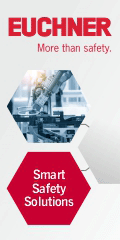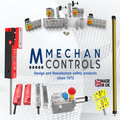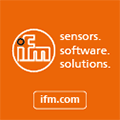
Posted to News on 2nd Nov 2016, 10:45
A simple business case for integrated robotic vision
As the need for flexibility and adaptability within packaging operations grows, Steve Capon, technical manager of FANUC UK looks at how integrated vision technology can help businesses respond to evolving market requirements more easily and package more complexly shaped products.
The last decade has seen a rapidly growing acceptance of robotic automation in the packaging industry, and most particularly within the food packaging sector, with food and drink industry robot sales growing by 15 per cent in the UK in 2015. In the early days the business case for robot integration was based largely on labour reduction, but it quickly became clear that robots had so much more to offer.
With increased throughput potential, and constant rate production, robots brought both greater output and greater predictability to packaging lines, enabling businesses to boost production capacity and also benefit from more accurate forecasting. Reducing the reliance on operator precision in repetitive tasks also helped to eliminate mistakes - such as individual products missing from multi-packs - and so reduce waste or reworking.
There was also a recognition of reduced material consumption when making or assembling the packaging material itself, all impacting on bottom-line profitability.
But just as technology evolves, so do market requirements. Robots, for example, quickly proved their worth in packaging lines in tasks such as picking and placing products at high speed. That is useful in highly repetitive processes when the same product is coming along the same line, in a fixed position and with consistent dimensions. But modern production is based around much small batch sizes, often with different packaging for different customers.
There is also the modern trend for low-count retail packs, again something difficult to achieve with standard robotic automation as it removes the predictability and consistency of the picking operation.
So how can businesses marry up the benefits of robotic automation with these rapidly evolving market requirements? The key is the integration of vision technology onto the packaging line. Giving the robot visual information about where the product is on the line, what its orientation is, what its height is, what order to pick, what orientation to place, etc, brings a whole new level of sophistication to packaging lines.
Vision technology enables the robot to recognise the product or package, verify its placement, and change from one product variant to another completely automatically, giving businesses vastly increased flexibility in meeting current packaging trends and requirements. While robots without vision technology can perform exacting picking and placing operations at high speed where the placement and orientation are known, robots with integrated vision technology can perform those operations on much smaller production runs and with greatly increased flexibility within those production runs, responding to changes based on camera feedback.
Coping with unknowns
The big argument for integrating vision technology into packaging applications, then, has become based not simply on increased speed, but on increased ability to deal with a greater number of variations within a smaller size of batch. But even further than this, increasingly vision technology can help packaging businesses cope with a greater number of unknowns. And this has become the driver behind the rise of 3D vision.
3D vision brings additional processing capabilities to the visual feedback, providing a new level of insight into the product height and orientation. If products are of a known or consistent size, then 2D vision can provide all of the necessary accuracy, monitoring the X and Y axes and even rotation around the Z axis to enable the robot to pick the products with absolute precision and reliability. But for products where the size, shape, height or orientation are not fully known from one product to the next, 3D vision is increasingly being accepted as offering an approach that can significantly boost a business' ability to increase productivity and improve quality.
Consider, for example, the relatively simple yet quite common scenario of different package heights on a conveyor, being picked and placed by a robot. 2D vision will give the X and Y coordinates of the package, as well as any rotation around the Z axis. But with no information about the height of the package, the robot cannot pick the package up without the potential for damaging it. Simple height sensor arrangements on the conveyor working in conjunction with a 2D vision camera might be one solution, but this increases the complexity of the control system set-up.
Packaging operations, however, and food packaging applications in particular, frequently work with even more complex product and package shapes, with objects that are non-identical not just from one batch to the next but from one product to the next. Bags of crisps or sacks of grain are typical examples. Loose food items not only have random shapes, but can end up in random positions and orientations.
This is where 3D vision technology comes into its own, with the ability not only to monitor X, Y and Z axes but also to process information on roll, pitch and yaw. However the product is presented to the robot, it will be picked accurately and placed with precision. This ability to locate products three dimensionally brings a high degree of flexibility and reliability to even the most complex picking and placing operations, and enables the automation of procedures that previously only human operators could have accomplished.
Simplifying the packaging line
Further, not only does 3D vision improve picking and placing accuracy with demanding objects, and improve flexibility for working with different products and low-retail packs, but it can also simplify other aspects of the packaging line. A good example is the integration of quality assurance operations into the picking and placing process. In the packing of cakes or confectionary, the robot with integrated vision might accurately pick a product based on accurate feedback of height information, but at the same verify that the height, colour and overall size were within tolerance.
Along with the simplification (or even removal) of end-of-line QA operations, robots with more effective vision technology might also mean there is no need for separate sections of the packaging line such as a collator, with the robot able to perform this operation as part of the packaging process.
We can see, then, that the business case for the integration of vision technology on robotic packaging lines is rapidly growing, enabling companies not only to increase flexibility in response to evolving market requirements, but also to make improvements to the packaging line itself. Vision technology across the board - whether 2D or 3D - has become eminently affordable, and the integration of this technology is no longer the preserve of specialists, with associated costs of set-up and support.
Regardless of product variants and package types, vision technology is increasingly enabling faster picking, shorter cycle times and quicker set-up, for packaging lines that are easily adaptable to multiple product variants, and which simplify or eliminate downstream operations.
Go to www.fanuc.eu for more information about integrated vision technology.
Want the latest machine building news straight to your inbox? Become a MachineBuilding member for free today >>















